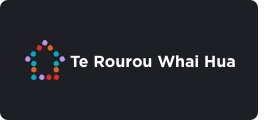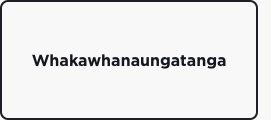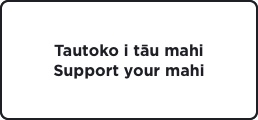1. Strengthen your understanding (Whakawhanaungatanga)

|
The most effective home-school partnerships are those in which parents and teachers are involved together in children's learning; teachers make connections to students' lives; and family and community knowledge is incorporated into the curriculum and teaching practices. All parents want what is best for their children. Making your school an inclusive place that welcomes parents and whānau, acknowledging and celebrating diversity, and involving the community in the learning and teaching at your school is an important part of enacting the cultural diversity principle. - Curriculum Online |
|
In this section there are a number of resources and ideas about establishing effective partnerships with others across school/cluster wide learning support teams as well as with whānau and ākonga. As an LSC you will be able to focus on effective ways of planning and communicating, building relationships, and listening to one another, to build a successful learning community and effective teams. |
Learning support teams and communities |
|
Kaiako do not need to have expertise in everything. However, they do need to know who can help them and how to work with others to support ākonga learning and wellbeing. As leaders of learning, kaiako collaborate and grow with others to ensure all their ākonga are successful. It is how people work together that matters. Read more about this in the working together module on Curriculum Online. |
|
Working together is about building a school community and a culture where people are welcome and feel able to contribute. Read more about school culture and networks of support on Curriculum Online. |
|
|
Collaborative Planning for LearningThis guide on the Inclusive Education website to start thinking about your role with whānau and other educators as you form teams and begin your inquiry into a puzzle of practice or challenge in your learning community. |
||
|
Read more about the purpose of this guide. |
||
Establishing connections in your communityEstablishing a learning support community team is about knowing the people in your community who can support the learning and wellbeing of ākonga. Read more about:
|
Click on the image to watch the video This college recognised the need for powerful and sustained connections. They made genuine connections with their local community and worked collaboratively and creatively to find proactive solutions. |
|
Valuing identity, language and culture |
||
| Reflecting the different cultures of your community within your school’s physical environment provides students and families a tangible reminder of the school's commitment to cultural diversity. More than just being symbolic, it creates an inclusive atmosphere and a sense of shared ownership. The way language or images are used, or the way different open spaces are presented around the school creates a sense of cultural connection for the students and school community. - Curriculum Online | ||
| The importance of valuing identity, language and culture cannot be underestimated. As teams come together they will not only think about how their relationships, connections and partnerships are inclusive of cultural diversity but also how this is reflected in the environments in which ākonga and their whānau belong. | ||
|
Incorporating cultural events, values, and practices that are relevant to learners into the curriculum and learning environment is one way that teachers can enable students to be secure in their cultural identity.
Janelle Riki-Waaka, at CORE Education, talks about how schools can better reflect the bicultural heritage of Aotearoa New Zealand so that all students can connect to and see themselves in their school. Sourced from CORE Education Digital Media on Vimeo. |
||
Partnership with whānau and ākongaThese key strategies for engagement with parents and whānau can support you to build close community networks that enhance ākonga learning and wellbeing.
|
Read more about this guide on Inclusive Education website. |
|
|
|
|
||
|
Partnership is a much more complex endeavour than merely involvement or participation: it is mutually determined and has benefits for all partners – students, whānau and teachers. - The Education Hub |
||
|
Read more on The Education Hub about home-school partnerships and other useful information about engagement with whānau. Use this link to watch a a short video from CORE Education on equitable partnerships. CORE Education also have a helpful infographic on establishing equitable partnerships called Who's at your table? Download their PDF. |
||
|
As an LSC you will have relationships with a diverse range of people. In your role you can support school teams to develop effective ways in which educators can establish and maintain reciprocal partnerships with whānau, founded on empathy and mutual respect. Three guides on the Inclusive Education website have sections that you could use for thinking about and planning for how these relationships are achieved in your learning settings. These are: |
||
Successful Home-School PartnershipsThis report describes the findings of a research project designed to improve understanding of the key elements of successful home–school partnerships and how they operate in some different school settings. Key features identified in the report are:
|
|
Ways of working, information sharing and consent protocols |
|
An important part of whakawhanaungatanga is establishing the kawa and tikanga that is important to all. Effective teams develop mutually agreed understandings and ways of working. Members keep the focus on student learning, positive relationships, and developing ways of communicating that work for all those involved. Read more about this on Curriculum Online. |
How information is treatedEssential to setting up protocols or kawa is how information is treated. Personal information is information that can identify a person. A child’s name, contact details, behaviours, attendance record, and achievement records are all examples of personal information. Ask: "Could someone identify an individual based on the information I am providing?" If the answer is yes, it's personal information. |
|
This video provides an overview on how information about ākonga can be shared to ensure the mana of both ākonga and whānau is protected. See more about following protocols for information sharing here. |
Learning Support RegisterA learning support register can provide an overall picture of perceived need and the provision of support at a school and a cluster level. Maintaining and updating this register may be a key responsibility of the LSC and SENCo in your cluster. Learn more about this here. Care is needed when identifying, discussing, and recording information about learners. Five guiding principles can support your team in the practices around the use of a register:
|
|
|
For more information about progress on the LSR contact your local Ministry of Education office. |
|
|
To access resources and tools to 'support your mahi' in whakawhanaungatanga click on the tab below. |
|



